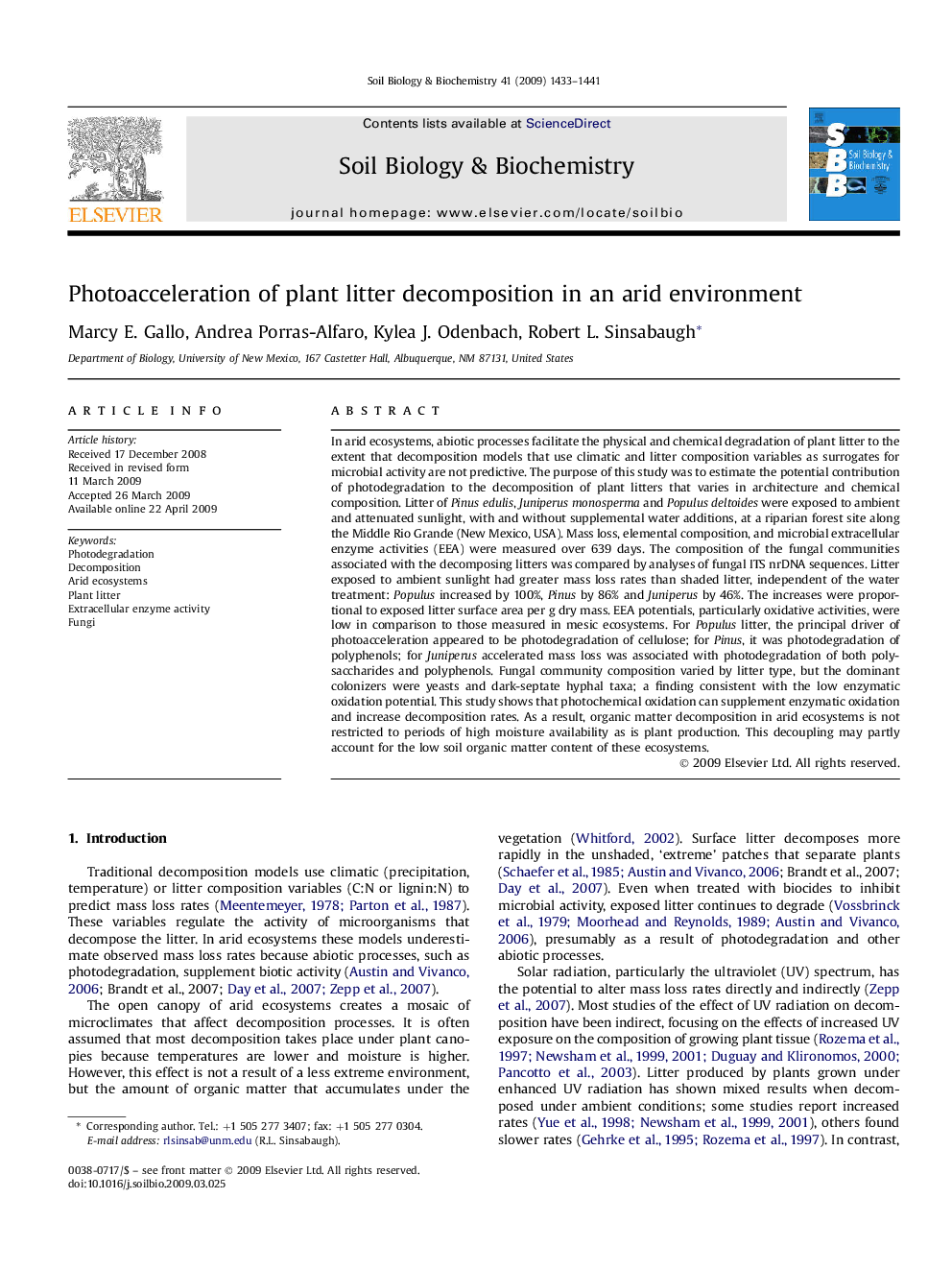| کد مقاله | کد نشریه | سال انتشار | مقاله انگلیسی | نسخه تمام متن |
|---|---|---|---|---|
| 2025205 | 1069988 | 2009 | 9 صفحه PDF | دانلود رایگان |
عنوان انگلیسی مقاله ISI
Photoacceleration of plant litter decomposition in an arid environment
دانلود مقاله + سفارش ترجمه
دانلود مقاله ISI انگلیسی
رایگان برای ایرانیان
کلمات کلیدی
موضوعات مرتبط
علوم زیستی و بیوفناوری
علوم کشاورزی و بیولوژیک
دانش خاک شناسی
پیش نمایش صفحه اول مقاله

چکیده انگلیسی
In arid ecosystems, abiotic processes facilitate the physical and chemical degradation of plant litter to the extent that decomposition models that use climatic and litter composition variables as surrogates for microbial activity are not predictive. The purpose of this study was to estimate the potential contribution of photodegradation to the decomposition of plant litters that varies in architecture and chemical composition. Litter of Pinus edulis, Juniperus monosperma and Populus deltoides were exposed to ambient and attenuated sunlight, with and without supplemental water additions, at a riparian forest site along the Middle Rio Grande (New Mexico, USA). Mass loss, elemental composition, and microbial extracellular enzyme activities (EEA) were measured over 639 days. The composition of the fungal communities associated with the decomposing litters was compared by analyses of fungal ITS nrDNA sequences. Litter exposed to ambient sunlight had greater mass loss rates than shaded litter, independent of the water treatment: Populus increased by 100%, Pinus by 86% and Juniperus by 46%. The increases were proportional to exposed litter surface area per g dry mass. EEA potentials, particularly oxidative activities, were low in comparison to those measured in mesic ecosystems. For Populus litter, the principal driver of photoacceleration appeared to be photodegradation of cellulose; for Pinus, it was photodegradation of polyphenols; for Juniperus accelerated mass loss was associated with photodegradation of both polysaccharides and polyphenols. Fungal community composition varied by litter type, but the dominant colonizers were yeasts and dark-septate hyphal taxa; a finding consistent with the low enzymatic oxidation potential. This study shows that photochemical oxidation can supplement enzymatic oxidation and increase decomposition rates. As a result, organic matter decomposition in arid ecosystems is not restricted to periods of high moisture availability as is plant production. This decoupling may partly account for the low soil organic matter content of these ecosystems.
ناشر
Database: Elsevier - ScienceDirect (ساینس دایرکت)
Journal: Soil Biology and Biochemistry - Volume 41, Issue 7, July 2009, Pages 1433-1441
Journal: Soil Biology and Biochemistry - Volume 41, Issue 7, July 2009, Pages 1433-1441
نویسندگان
Marcy E. Gallo, Andrea Porras-Alfaro, Kylea J. Odenbach, Robert L. Sinsabaugh,